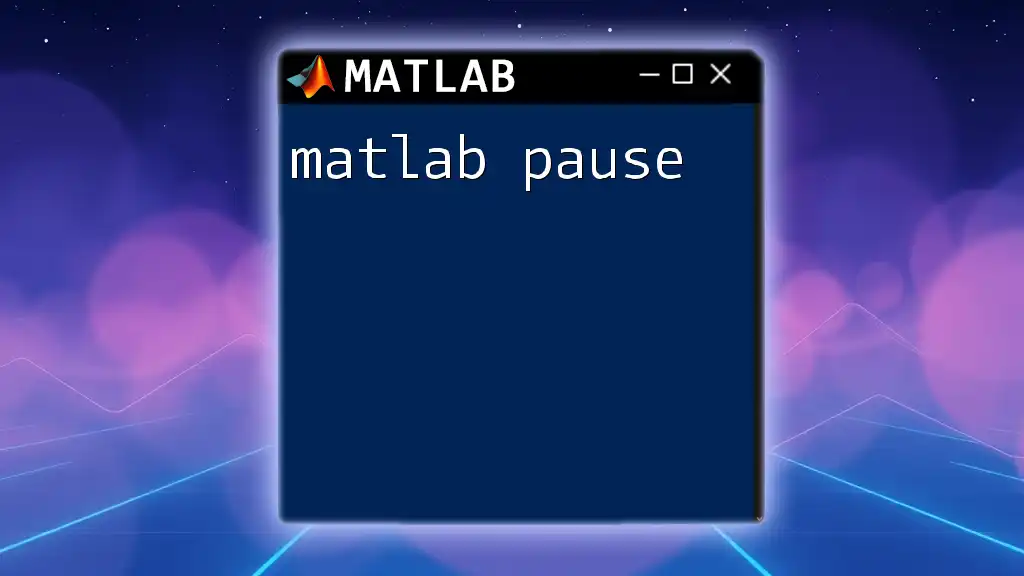In MATLAB, a sparse matrix is a memory-efficient way to store matrices that contain a significant number of zero elements, allowing for faster computation and reduced memory usage.
Here's a simple code snippet to create a sparse matrix:
A = sparse([1, 2, 3], [2, 3, 1], [4, 5, 6], 3, 3);
Understanding Sparse Matrices in MATLAB
What is a Sparse Matrix?
A sparse matrix is a matrix in which the majority of the elements are zero. In MATLAB, distinct data structures are utilized to represent sparse matrices effectively, which consume significantly less memory than their dense counterparts. This distinction can lead to considerable performance gains while performing computations, especially in large-scale applications.
When to Use Sparse Matrices?
Sparse matrices should be utilized when:
- The matrix contains a large number of zeroes relative to its size.
- Memory usage is a concern, especially with large datasets.
- Performance optimization is needed for mathematical operations involving large matrices.
Performance Comparison: For instance, multiplying large sparse matrices can be exponentially faster and consume less memory when compared to dense matrix multiplication, allowing MATLAB to handle larger datasets efficiently.

Working with Sparse Matrices in MATLAB
Creating Sparse Matrices
Sparse matrices can be created using the built-in `sparse` function. The syntax is as follows:
S = sparse(i, j, s, m, n)
Here, `i` and `j` are vectors that specify the row and column indices of the non-zero elements, `s` contains the actual non-zero values, and `m`, `n` specify the size of the resulting sparse matrix.
Example Code Snippet:
% Example of creating a sparse matrix
i = [1, 2, 3];
j = [1, 2, 3];
s = [10, 20, 30];
S = sparse(i, j, s, 3, 3);
disp(S);
You can also form a sparse matrix from a dense matrix, enhancing performance without excessive memory use. Simply use:
A = [1 0 0; 0 0 3; 0 0 0];
S = sparse(A);
disp(S);
Essential Operations on Sparse Matrices
Accessing Elements
Accessing individual elements in a sparse matrix is straightforward; simply reference them like you would in a regular matrix:
value = S(2,3); % Access value at 2nd row, 3rd column
Modifying Sparse Matrices
Adding or altering values in a sparse matrix can be done similarly to any MATLAB array. For example, to update an element, use:
S(1,2) = 5; % Modifying an element to 5
disp(S);

Advantages of Using Sparse Matrices
Memory Efficiency
Sparse matrices provide significant memory savings because they store only non-zero elements, translating to less memory consumption as the matrix grows in size. In operations involving a matrix with a high percentage of zeroes, the memory requirements can drop dramatically.
Speed Efficiency in Computations
Sparse matrices improve computational speed as many functions in MATLAB are optimized for sparse data. For instance, multiplying a sparse matrix with another can be significantly faster than doing the same operation on dense matrices.
Example Code Snippet:
B = sparse(1000, 1000);
tic; C = S * B; toc; % Measuring time for matrix multiplication
This measurement allows users to notice firsthand the speed advantage of sparse operations, particularly in larger datasets.

Functions for Sparse Matrix Manipulation
Common Functions in MATLAB for Sparse Matrices
MATLAB provides several functions unique to sparse matrices, enhancing user experience and efficiency. These include:
- `full()`: Convert sparse matrix back to dense format.
- `size()`: Returns the size of the sparse matrix.
- `nnz()`: Counts the number of non-zero elements in the sparse matrix.
- `find()`: Returns the row and column indices of the non-zero elements.
Usage Example:
% Count non-zero elements
count = nnz(S);
Advanced Operations
MATLAB supports advanced matrix operations including addition, multiplication, and transposition with sparse matrices. For example, transposing a sparse matrix can be done effortlessly:
T = S'; % Transpose of the sparse matrix
disp(T);

Best Practices for Using Sparse Matrices in MATLAB
When utilizing sparse matrices, some best practices can enhance performance and efficacy:
- Initialize Sparsity: Always initialize your sparse matrices properly to avoid overhead during operations.
- Avoid Excessive Modifications: Frequent changes to sparse matrices can lead to performance drawbacks; consider building a dense matrix and converting to sparse if numerous modifications are needed.
- Profile Your Codes: Use MATLAB’s built-in profiler to analyze performance and establish where sparse matrices can save time and resources.

Troubleshooting Common Issues
Working with sparse matrices might introduce some common errors which can be addressed as follows:
- Dimension Mismatch Errors: Ensure that when modifying sparse elements, your indices stay within the defined dimensions of the matrix.
- Performance Issues: If a sparse matrix doesn't show expected performance benefits, consider assessing the density of non-zero elements as well as ensuring that the matrix operations are tailored to sparse formats.

Conclusion
Utilizing MATLAB sparse matrices can lead to substantial benefits in memory usage and computational speed, particularly when dealing with large datasets characterized by a high proportion of zeroes. With the proper knowledge and implementation techniques outlined in this guide, users can streamline their data processing tasks and leverage MATLAB's powerful capabilities for effective data analysis.
Continue to explore and refine your skills, keeping abreast of MATLAB documentation and community resources for ongoing learning and support in your journey with MATLAB sparse matrices.

















